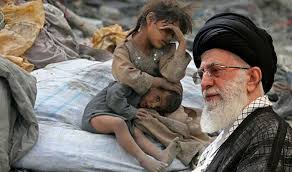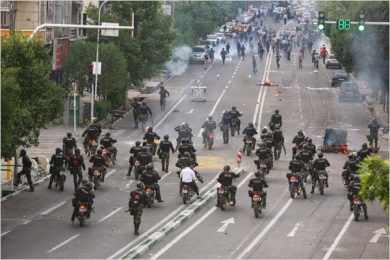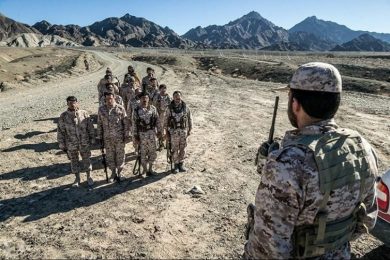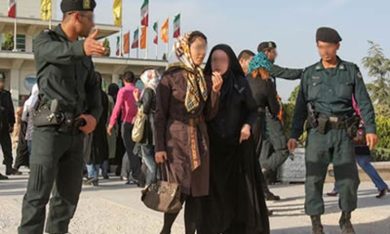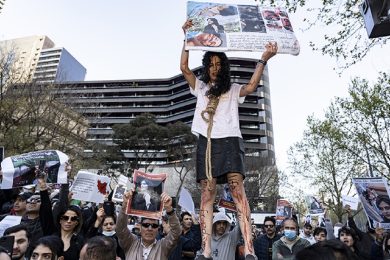For decades, Iranian women have been at the forefront of resistance against the Islamic Revolutionary Guard Corps (IRGC) and the Iranian regime’s oppressive policies. From protests to civil disobedience, women in Iran have defied mandatory hijab laws, gender discrimination, and political repression, making them key figures in the fight for freedom, equality, and justice. The IRGC, tasked with enforcing the regime’s authoritarian rule, has responded with brutal crackdowns, arrests, torture, and even executions. Despite the risks, Iranian women continue to lead one of the most courageous movements for human rights in modern history. This report highlights their struggles, resistance strategies, and the global support needed to amplify their voices.
1. The Role of Iranian Women in the Fight for Freedom
A. Women at the Forefront of Protests
• Iranian women have played a central role in major uprisings, including:
• The 2009 Green Movement, where women led protests against election fraud.
• The 2017-2018 economic protests, where many women challenged both economic hardship and government repression.
• The 2022 Women, Life, Freedom movement, sparked by the death of Mahsa Amini, which became a global symbol of resistance.
B. Defying the Mandatory Hijab Law
• Women have publicly removed their hijabs as a form of civil disobedience.
• The “Girls of Revolution Street” movement saw women standing on public platforms, waving their hijabs in protest.
• The IRGC and morality police responded with violent arrests and prison sentences for these peaceful acts.
C. Leading the Fight in Education and Workplaces
• Women in universities, journalism, law, and activism continue to resist the regime’s restrictions on education and employment.
• Despite legal discrimination, women have been instrumental in exposing corruption, documenting human rights abuses, and organizing underground resistance networks.
2. The IRGC’s Repression Against Women
The IRGC plays a direct role in enforcing Iran’s gender apartheid system, using brutality and intimidation to silence women’s resistance.
A. Arrests and Imprisonment
• Women activists, journalists, and protest leaders are regularly arrested under vague charges like “acting against national security”.
• Political prisoners face long sentences in Evin Prison and other facilities notorious for torture and abuse.
B. Violence and Torture
• Female detainees report sexual violence, beatings, and psychological torture in IRGC-controlled detention centers.
• Security forces use live ammunition, batons, and acid attacks to terrorize women at protests.
C. Online Surveillance and Harassment
• IRGC cyber units track women activists online, hacking accounts, and blackmailing them with personal information.
• Disinformation campaigns label feminist activists as foreign agents, trying to discredit their efforts.
3. Stories of Courage: Women Who Defied the IRGC
A. Mahsa Amini: A Symbol of Resistance
• Mahsa Amini, a 22-year-old Kurdish woman, was arrested by morality police for allegedly violating hijab laws.
• She was beaten to death in custody, sparking nationwide protests and inspiring the Women, Life, Freedom movement.
• Her name became a global rallying cry against IRGC repression.
B. Narges Mohammadi: A Champion for Human Rights
• A prominent journalist and activist, Narges Mohammadi has spent years in prison for advocating women’s rights and political reform.
• Despite imprisonment, she continues to send letters and reports exposing torture and human rights abuses in Iran.
C. Nasrin Sotoudeh: A Voice for the Silenced
• Nasrin Sotoudeh, a renowned human rights lawyer, has defended political prisoners and women arrested for removing their hijabs.
• The IRGC sentenced her to 38 years in prison and 148 lashes for her work.
• Despite the brutality, she remains a symbol of unwavering courage.
4. Global Solidarity and Support for Iranian Women
A. International Protests and Advocacy
• Global demonstrations in Berlin, Washington D.C., Paris, and Toronto have shown solidarity with Iranian women.
• #WomenLifeFreedom has become one of the largest digital movements, with millions supporting Iranian women online.
B. Sanctions on IRGC Officials
• The United States, European Union, and Canada have imposed sanctions on IRGC officials responsible for violence against women.
• More countries are being urged to designate the IRGC as a terrorist organization to weaken its financial and military networks.
C. Legal and Humanitarian Support
• Human rights organizations are working to:
• Document human rights violations for international trials.
• Provide safe digital communication tools for Iranian activists.
• Fund legal aid and financial assistance for families of imprisoned women.
5. The Future of Women’s Resistance in Iran
A. Digital Activism and Underground Networks
• Women are using encrypted messaging apps to organize secretly, bypassing IRGC surveillance.
• Underground resistance groups are spreading banned books, feminist literature, and educational resources.
B. The Role of the Iranian Diaspora
• Iranian women abroad are leading advocacy efforts, helping amplify voices inside Iran.
• The diaspora community is critical in pressuring governments to take action against the IRGC.
C. Escalating Resistance
• Women’s resistance is growing stronger, with more men joining the fight for gender equality and political freedom.
• The regime’s fear of women-led movements shows the power of female leadership in shaping Iran’s future.
6. Conclusion: The Unstoppable Fight for Freedom
Iranian women are fearless leaders in the fight against IRGC oppression. From grassroots activism to global advocacy, their struggle for justice, equality, and human rights is unstoppable. Despite brutal repression, they continue to resist, proving that no dictatorship can silence the voice of freedom forever.
Join Our Newsletter!
Stay informed with the latest updates, news, and ways to take action in the fight for justice and global security. Sign up now to get updates delivered straight to your inbox!

